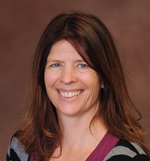University of Redlands Emergency Alert System
Alert Received: . For more information, visit: https://www.redlands.edu/alert/
University of Redlands
Professional Bio:
 Dr. Lisa LaSalle has been a professor in the University of Redlands Communicative Disorders department since Fall 2011. She previously taught for 18 years at the University of Wisconsin-Eau Claire. Dr. LaSalle is a speech-language pathologist certified by the American Speech-Language Hearing Association with specialty training in stuttering and fluency disorders. She has taught (under-)graduate courses and supervised student clinicians in Communication Sciences and Disorders programs for 22 years.
Dr. Lisa LaSalle has been a professor in the University of Redlands Communicative Disorders department since Fall 2011. She previously taught for 18 years at the University of Wisconsin-Eau Claire. Dr. LaSalle is a speech-language pathologist certified by the American Speech-Language Hearing Association with specialty training in stuttering and fluency disorders. She has taught (under-)graduate courses and supervised student clinicians in Communication Sciences and Disorders programs for 22 years.
Dr. LaSalle’s research interests and publications involve the topics of childhood stuttering, concomitant disorders associated with stuttering, multilingual aspects of stuttering, and a fluency disorder known as cluttering. Recent publications include: LaSalle (2015), Slow speech rate effects on stuttering preschoolers with disordered phonology, Clinical Linguistics and Phonetics; LaSalle & Huffman (2014), Speech sample measures in Japanese children and adults who stutter, Speech, Language and Hearing; Wolk & LaSalle (2014), Phonological complexity in school-aged children who stutter and exhibit a language disorder, Journal of Fluency Disorders; LaSalle & Wolk (2011), Stuttering, cluttering, and phonological complexity: Case studies, Journal of Fluency Disorders.
Dr. LaSalle’s future research plans include the mapping of acoustic verification of accents based on data collected by former speech and hearing science students, and collaboration with medical professionals on the topic of adults who stutter and medications that affect dopamine and GABA neurotransmitters. Her clinical research plans include multilingual and cross-linguistic aspects of stuttering. At the graduate level, Dr. LaSalle teaches Fluency Disorders, Fluency Disorders Clinic, Evidence-Based Practice, and Voice Disorders, and she currently teaches Speech and Hearing Science at the undergraduate level. Dr. LaSalle has chaired three Senior Honors thesis projects, and she now plans to teach a senior capstone course based on simulated cases.
Project Summary:
In any given year, our department has approximately 50-60 seniors majoring in CDIS. Senior CDIS students currently have a choice between two capstone courses: CDIS 411 “Assessment and intervention in communicative disorders,” and CDIS 413: “Communicative disorders capstone.” This course proposal, “CDIS 413 Communicative Disorders Capstone: Simulated Cases,” is based on the need for students to understand how to integrate liberal arts and their communicative disorders knowledge into a particular case, and to learn about various cases.
Simulation technologies are effective educational tools becoming popular in various allied health professions. The premise is that students first need to learn about a background of a case in order to know what to do, then they need to learn how to do what they have planned. Finally, they need to know how to interview properly, how to administer various diagnostic instruments, etc. Finally, students in our major need to learn to work well with classmates and professionals, in order to hone those interpersonal team work skills that will benefit them in their chosen occupations, graduate school and beyond. While many allied health professions (e.g., dentistry, pharmacy, medical, nursing) have implemented simulations, we have not yet integrated simulation teaching successfully into our communication sciences and disorders curricula.
The benefits for integrating simulation teaching into our department’s curriculum include:
The integrated digital technology of simulation hardware and software has evolved and improved in recent years. I will use a product and service available through Speechpathology.com and AlliedHealthMedia.com known as SimuCase™ (http://www.speechpathology.com/simucase/). It is a platform of simulated cases, allowing users to review, assess/diagnose and plan treatment for 16 different virtual patients/clients, with communication disorders such as speech sounds disorders, word-finding deficits, and CVA/stroke.